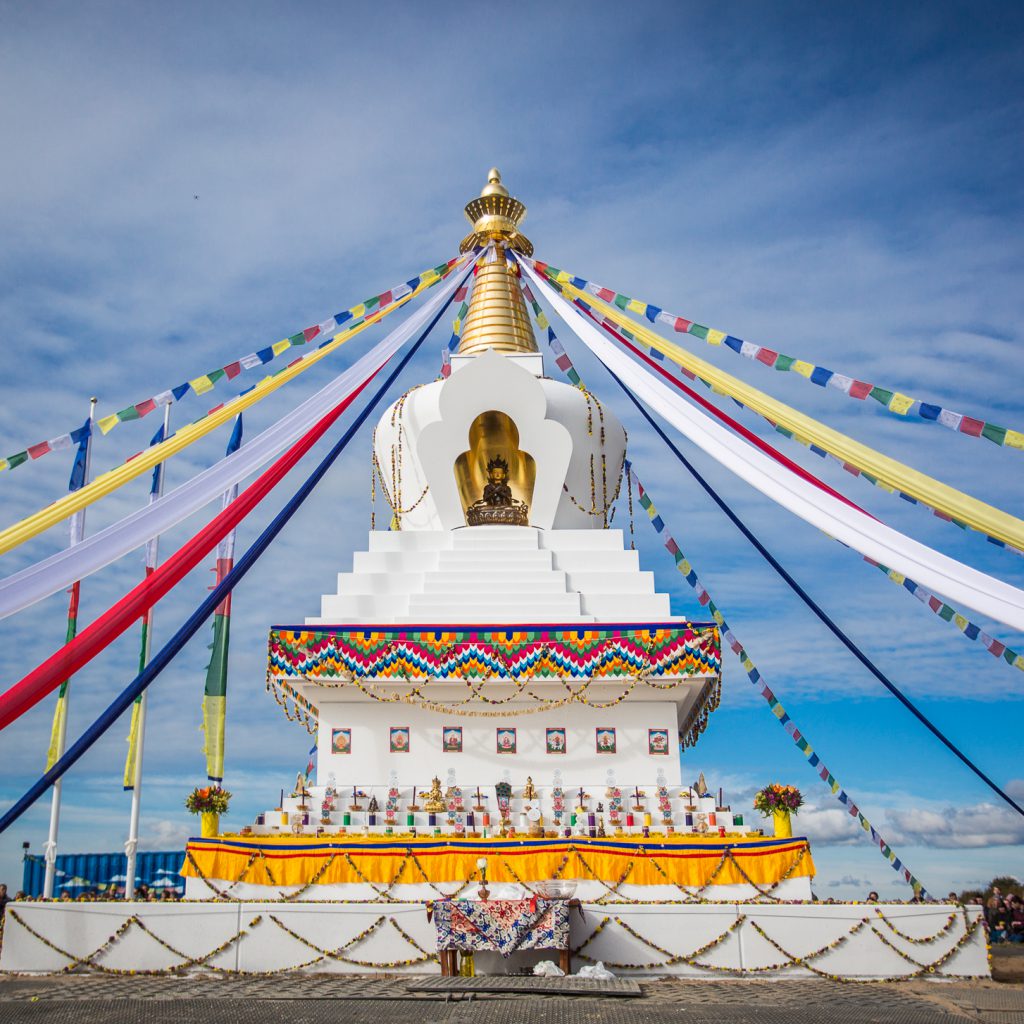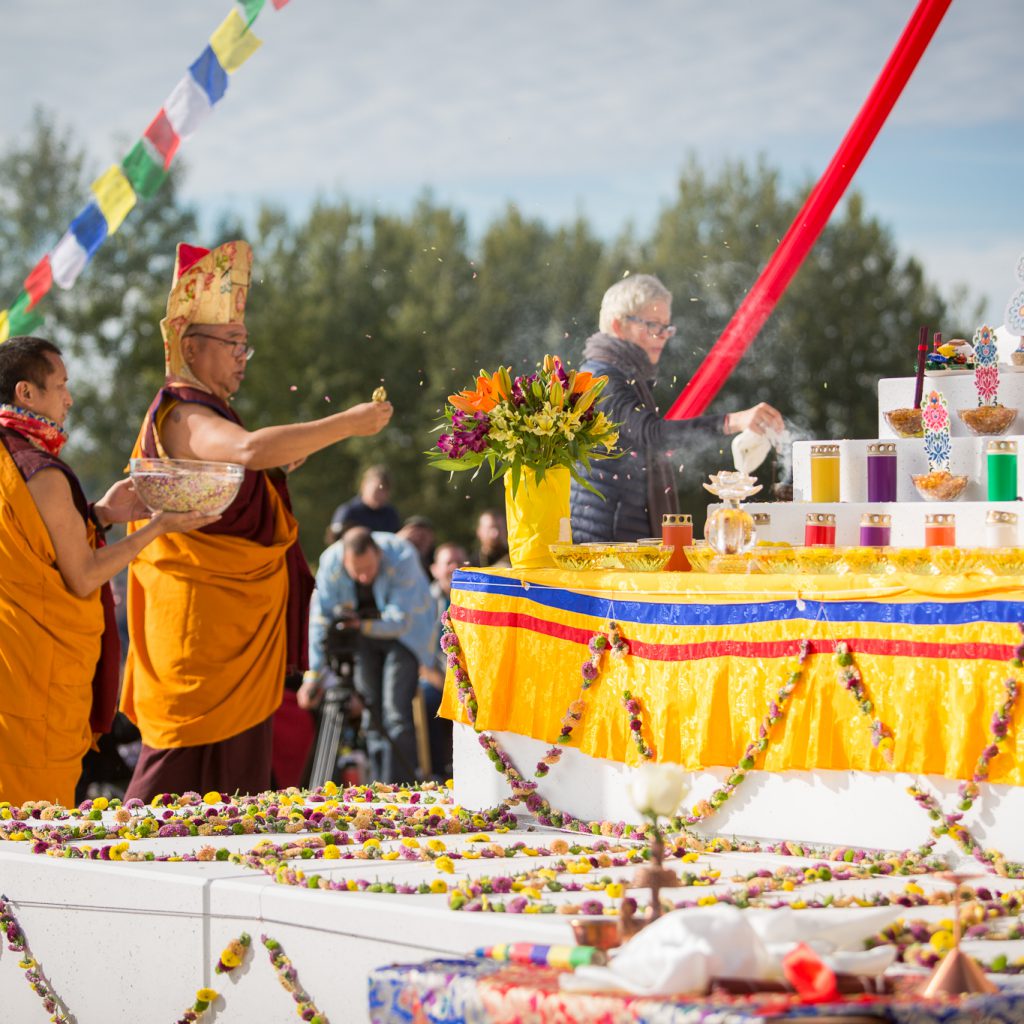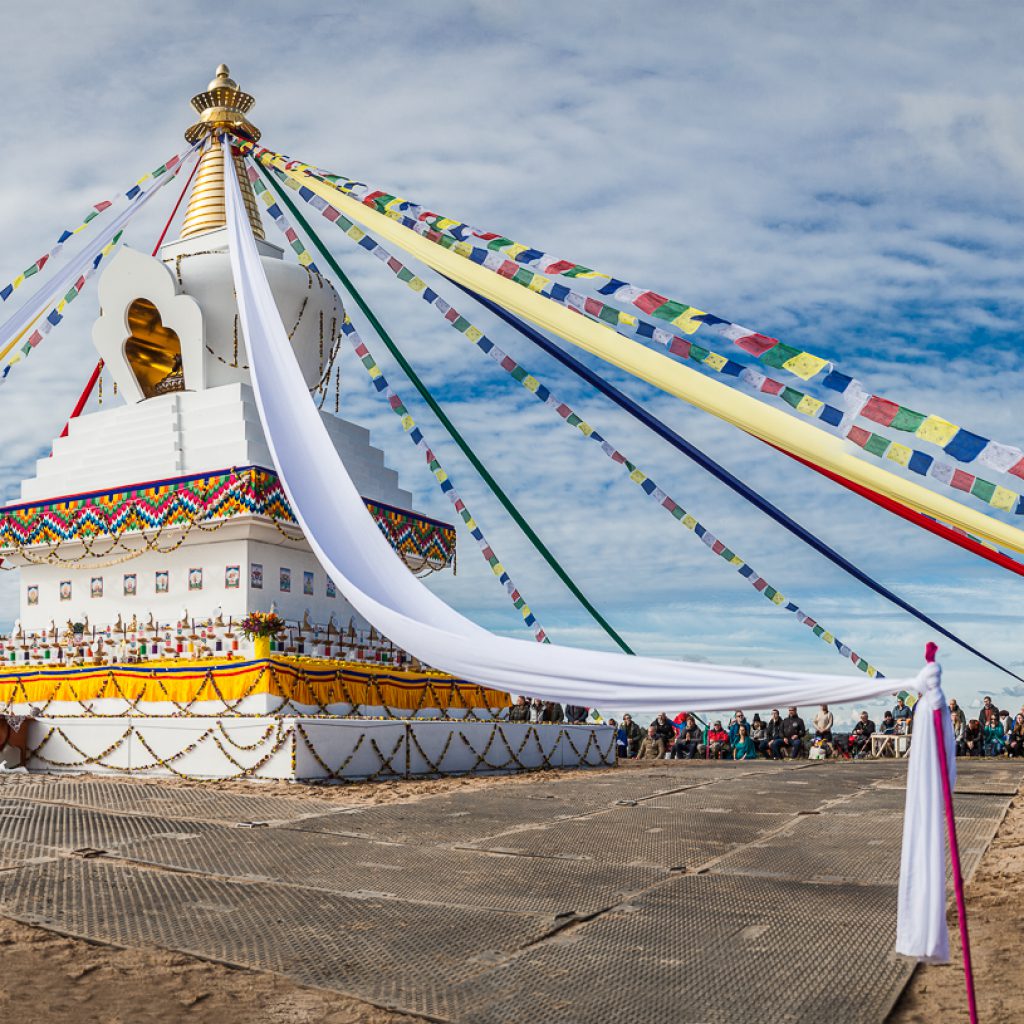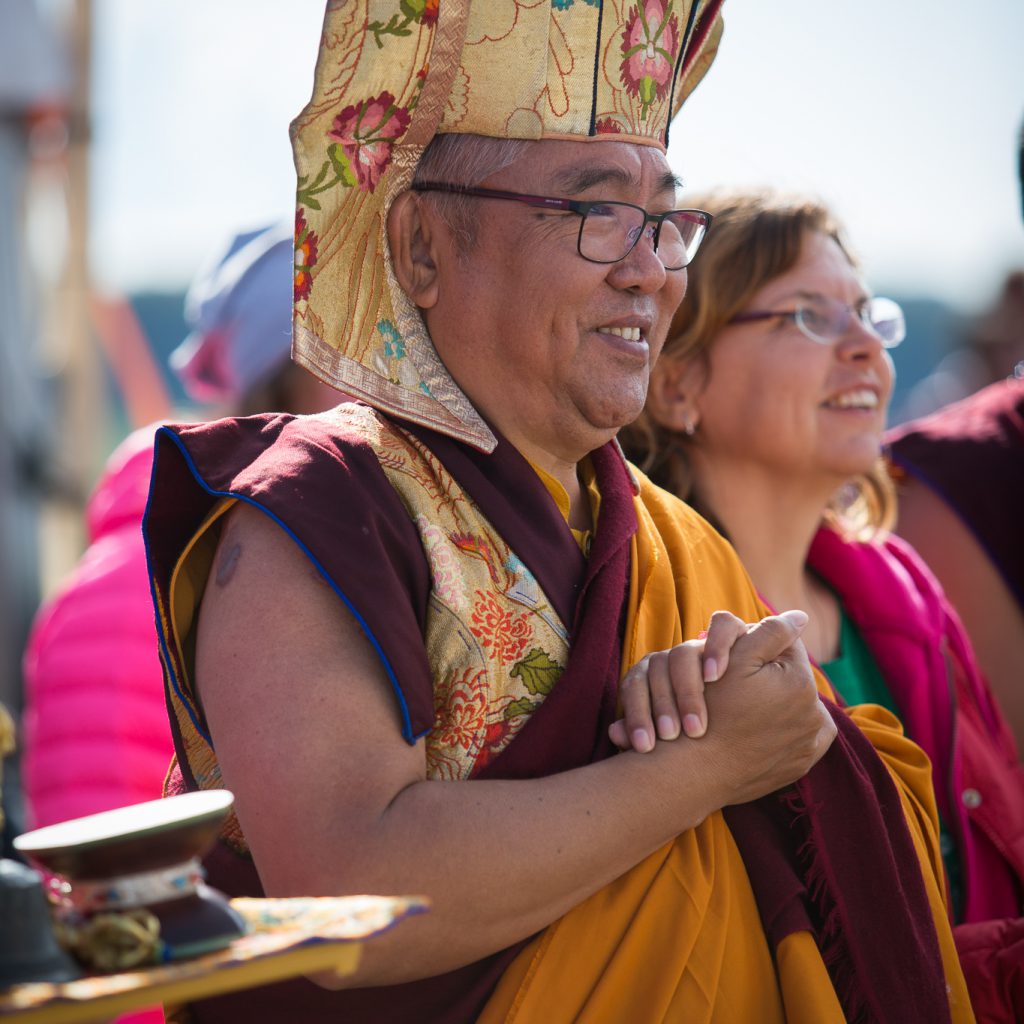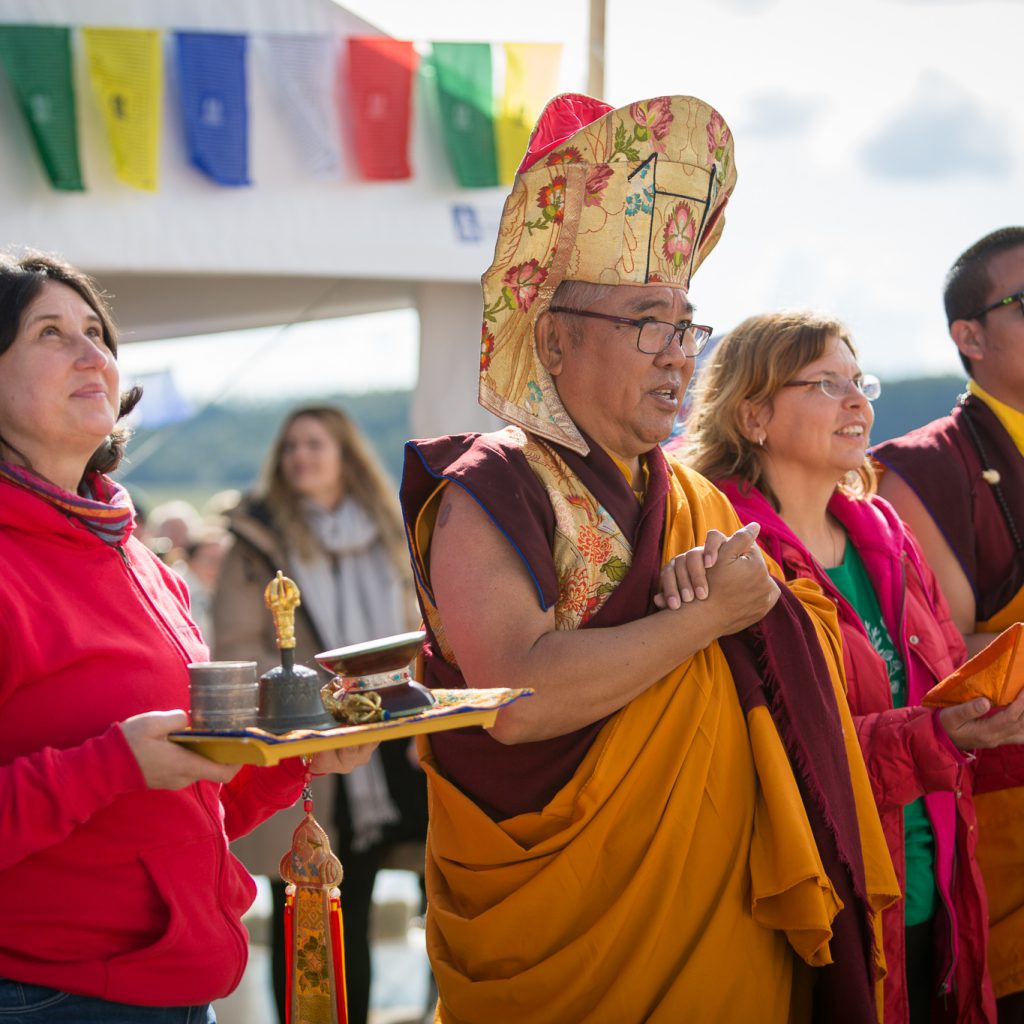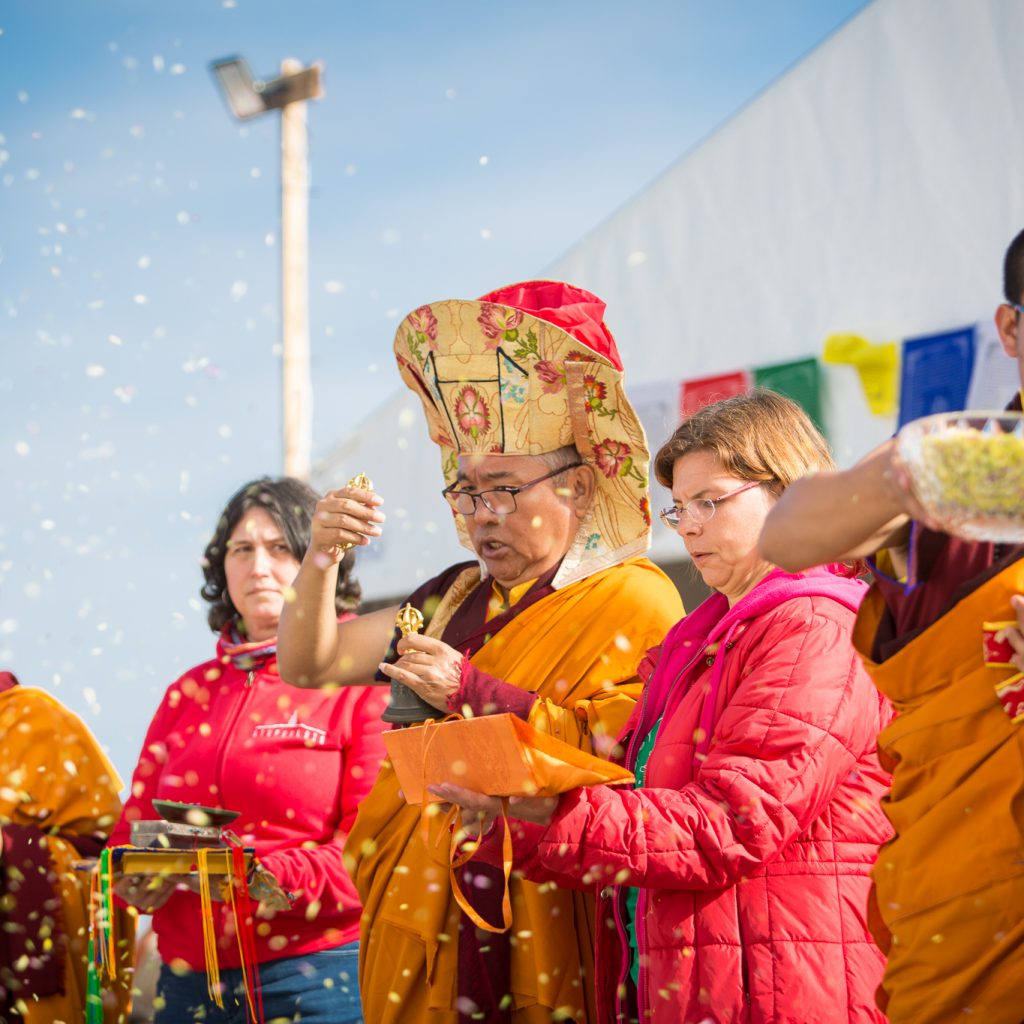The first Buddhist Stupa in Lithuania
The Stupa – a symbol of the Buddha’s enlightenment – was built at the Stupkalnis Diamond Way Buddhist Centre in the Kelme district, near Kražiai. It was inaugurated on 24th of September at a ceremony led by venerable Nedo Rinpoche of the Karma Kagyu tradition. The inauguration was attended by 1500 people from Lithuania and many other countries.
The Stupa (Tibetan: Tschoerten) was built to commemorate the 50th anniversary of the Diamond Way School, founded by Lama Ole Nydahl, and the 25th anniversary of the Diamond Way School’s activities in Lithuania. Lama Ole and Hana Nydahl were the first Western disciples of the 16th Gyalwa Karmapa, the head of the Karma Kagyu tradition. His Holiness requested them to teach Buddhism in the West and their work has been hugely successful.
Stupas are symbols of the true nature of mind. They point to the timeless, indestructible
characteristics of enlightenment: fearlessness, joy and active compassion. After 2500 years of the Buddhist tradition, Stupas remind us of the possibility that all beings can reach enlightenment.
If one observes a stupa from the bottom to the top, every level represents the steps of development towards enlightenment. The construction base of a stupa points towards the five elements of earth, water, fire, air and space; they correspond to a quadratic base, round middle part, triangular top, half moon and sun, as well as drops for space and consciousness. Beyond that, the stupa represents Buddha, Dharma, and the community of practitioners, the most important reference points in the life of every Buddhist.
Stupas contain precious Buddhist substances like mantras, relics, and healing substances, as well as symbols for the body, speech and mind of the Buddha. At the places, where Stupas are built, one can simply enjoy them, meditate next to them, or circle them in accordance with ancient tradition in a clockwise direction. It is said that the merit of a stupa is circled, is comparable to the merit of giving a gift to a Buddha. Buddhists think that the wishes made in the proximity of a Stupa will become reality.
Whichever religious tradition one belongs to: Stupas remind us of the possibility of personal development, which benefits many; a development that is beyond any affiliation and without specific religious institutions.
Stupas are manifestations of countless wishes. Through them, may permanent happiness be established in the world.
